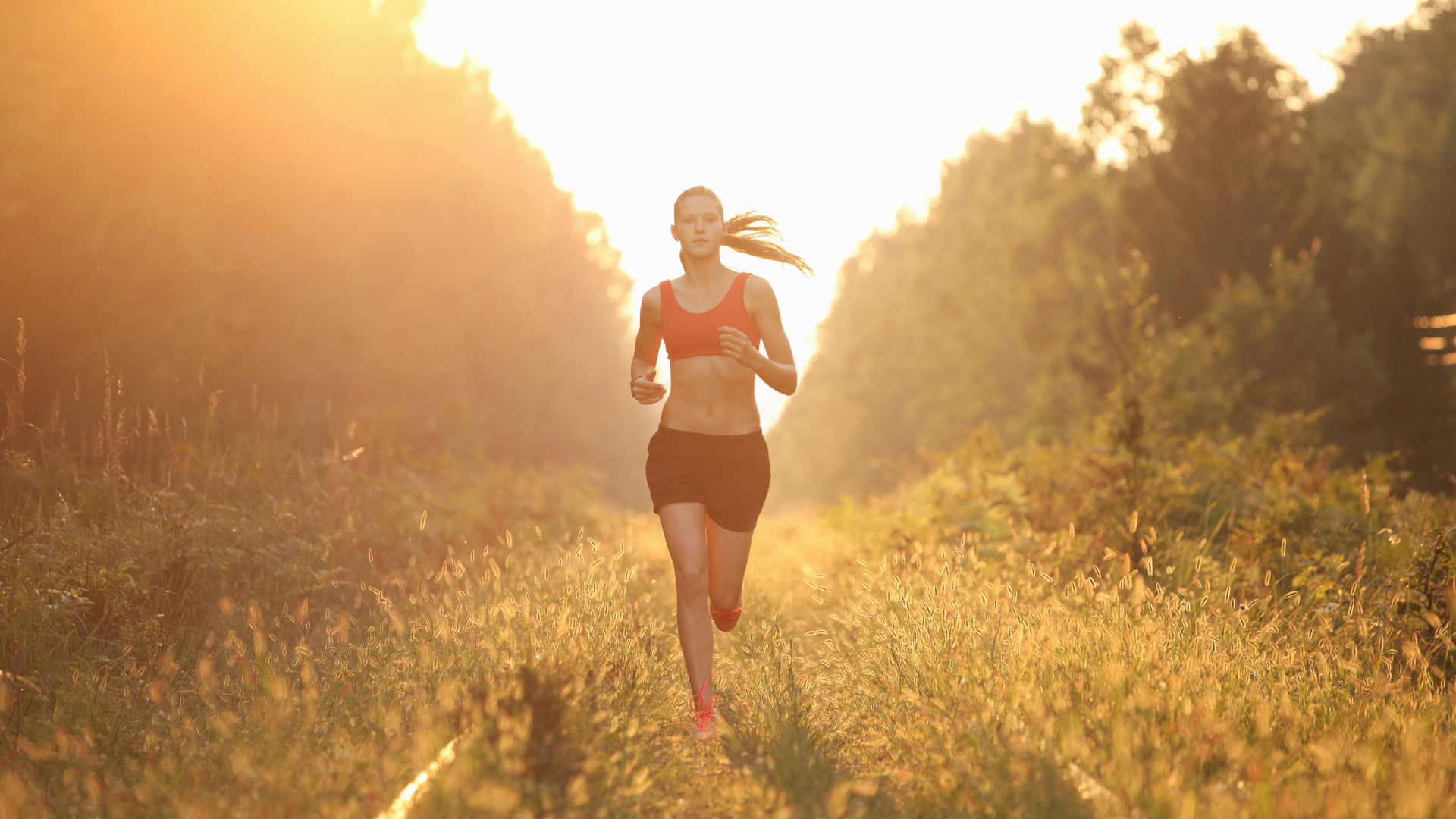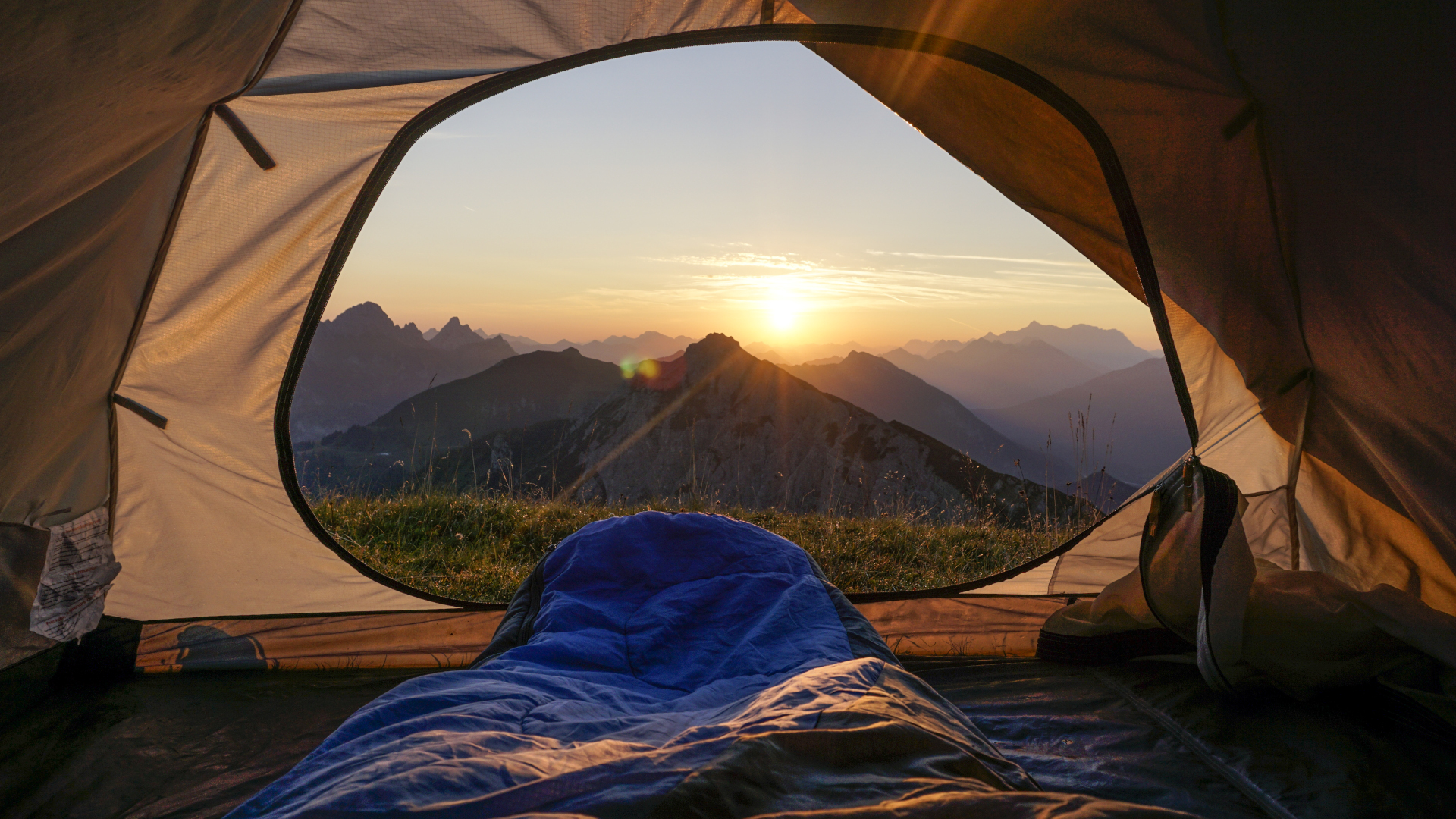We finally know why morning light is so crucial to your health
We speak to a doctor and pioneering researcher and uncover groundbreaking new details on how morning light can boost your health and performance, and even reverse the effects of aging

Why is morning light so crucial to your health? The idea is nothing new – ancient medical texts dating back thousands of years such as India’s Charaka Samhita specify that you should wake up at least 45 minutes before sunrise for physical and mental health and longevity. But I’ve always wondered about the science behind it. Is it simply that the exposure to light signals to your brain that it’s time to wake up, or is there something extra special about that red and golden light at sunrise?
I’ve wanted to get to the bottom of this question for a while now, so as to understand whether there really are added benefits to getting out in my hiking boots bright and early, as I so often do, or if it really doesn’t matter what time I go so long as I get some exposure to some sunlight at some time, to top up my vitamin D levels. So when the topic came up during a recent conversation with Dr Keith Wallace, a pioneering researcher on the physiology of consciousness and author of a multitude of books on neurophysiology, the microbiome and meditation, I jumped on the opportunity to get his take on the matter. What he told me has potentially profound implications for anyone who hits the trail with the morning sun.

The first part of why morning light is so crucial to your health may not come as much of a surprise to anyone who’s heard of the Circadian Rhythm. If you need a quick recap, the Circadian Rhythm was discovered around 1970 and describes the mechanism of your internal “clock,” a process of hormone release and suppression governed by your hypothalamus, the so-called pacemaker of your body which keeps everything functioning on a 24-hour schedule. The whole process kicks off when photoreceptors in the retina of your eyes communicate the brightness of your surroundings to your brain.
In addition to the rods and cones in your eyes that detect things like color and form, however, Wallace explains that there's another visual pigment called melanopsin, which seems to be there primarily to sync us up with the sun, meaning that you have the energy and focus to go about your day, among many, many other things.
“There are many different pathways to the brain, so we don't even know all the things it does, but one thing it does is send a signal to the central clock and the brain. And that central clock and the brain then send the information to the pineal gland and to the adrenal gland.”
Your pineal gland is a raisin-sized gland in your brain that helps to control your wake/sleep cycles through the production of melatonin, a naturally-occurring hormone that helps you sleep. Your adrenals are apricot-sized glands that sit atop your kidneys and control many essential functions including metabolism, immune function, and your stress response. Once your pineal gland has got the memo that your eyes are detecting light, it stops the production of melatonin, and your adrenals increase the production of another hormone, cortisol, which it turns out is more than just a function of your fight-or-flight response.
“You want to increase cortisol. It is often called the stress hormone, and it's produced during stress, but it also is a wake up hormone, and if you don't have cortisol, you die,” explains Wallace.
Advnture Newsletter
All the latest inspiration, tips and guides to help you plan your next Advnture!

So when your eyes detect light, they go about getting the message out to the rest of your body that it’s time to get up, lace up your trail running shoes, brew some coffee or however it is that you start your day. But couldn’t the same thing be achieved at noon for those of us partial to a lie in? Or simply by switching on the lights?
Well, yes, kind of, but not with the same benefits, according to Wallace, and that’s the case for two reasons. First, there’s another aspect to melatonin that has wider reaching significance for your health than just sending you off to the land of nod. Second, as it turns out, there may really be something special about that dawn hue.
This is because, in addition to going through your eyes, red light goes through your skin. Here, Wallace stops to describe the process of Red Light Therapy, a treatment that has been used on cancer patients which uses red light to penetrate the skin, bones and even the cells. He explains that the therapy has been implicated in energy production of the cells and therefore functions such as muscle contraction and nutrient absorption, increasing blood flow and reducing pain. Red light rays have longer waves, and that’s why they’re able to reach us when the sun is lower in the sky, such as at dawn and dusk.
“Each color of light has different effects. At midday, you've got a lot of scattering of the short wavelengths of blue light, and they scatter all over the place, so the sky appears blue. But in the early morning, you have a different wavelength of light that appears red or yellow.”

It’s this red light that is one of the most interesting ones when it comes to our health, according to Wallace.
“Red light and near infrared light could stimulate the production of melatonin again, not the sleep hormone melatonin, produced by the pineal gland. But it turns out melatonin is ubiquitous, it's throughout the body.”
This melatonin, produced by the mitochondria, is a super antioxidant, and this is where things get really juicy.
“It’s really good for anti-inflammation and anti-aging, it’s probably an athlete's dream. Because this stuff fights all that oxidation that comes when you burn oxygen, especially during athletics.”
Different from the shortwave bright light of midday, red morning light is able to penetrate your cells and the end result is that it can potentially boost cellular energy and even reverse the cell damage that we know is caused by exercise, otherwise known as Exercise-Induced Oxidative Stress.
“So there's these different pathways – one that can sync the whole system and affect melatonin, the hormone produced by the pineal gland, and other ways it can go through the skin and affect all the cells of the body that produce melatonin, the powerful antioxidant. So it's a lot more interesting than we ever thought.”

So what's the lesson here?
For now it seems as though it’s to set your alarm (read up on how to wake up earlier if this doesn’t come easily to you) and get outdoors, whether that’s a short jaunt around your neighborhood in your road running shoes or a longer hike or run on the soft stuff.
While you're out there, try to leave a little skin exposed – depending on the time of year, that may mean wearing a short-sleeved running top rather than a long-sleeved base layer, running shorts instead of leggings, or even just keeping your face and neck exposed if it’s cold. The early morning sun is less damaging to your skin, but sunscreens don’t block infrared light so definitely practice sun protection if you’re going to be out in the hills all morning.
And if you can’t squeeze your workout into your already jam packed morning, you should still get up and get synched up with the sun, then you can get outdoors at sunset when those red rays stretch their way across to you from the horizon once again. Just pack a headlamp in case you end up returning home after dark.
Julia Clarke is a staff writer for Advnture.com and the author of the book Restorative Yoga for Beginners. She loves to explore mountains on foot, bike, skis and belay and then recover on the the yoga mat. Julia graduated with a degree in journalism in 2004 and spent eight years working as a radio presenter in Kansas City, Vermont, Boston and New York City before discovering the joys of the Rocky Mountains. She then detoured west to Colorado and enjoyed 11 years teaching yoga in Vail before returning to her hometown of Glasgow, Scotland in 2020 to focus on family and writing.

